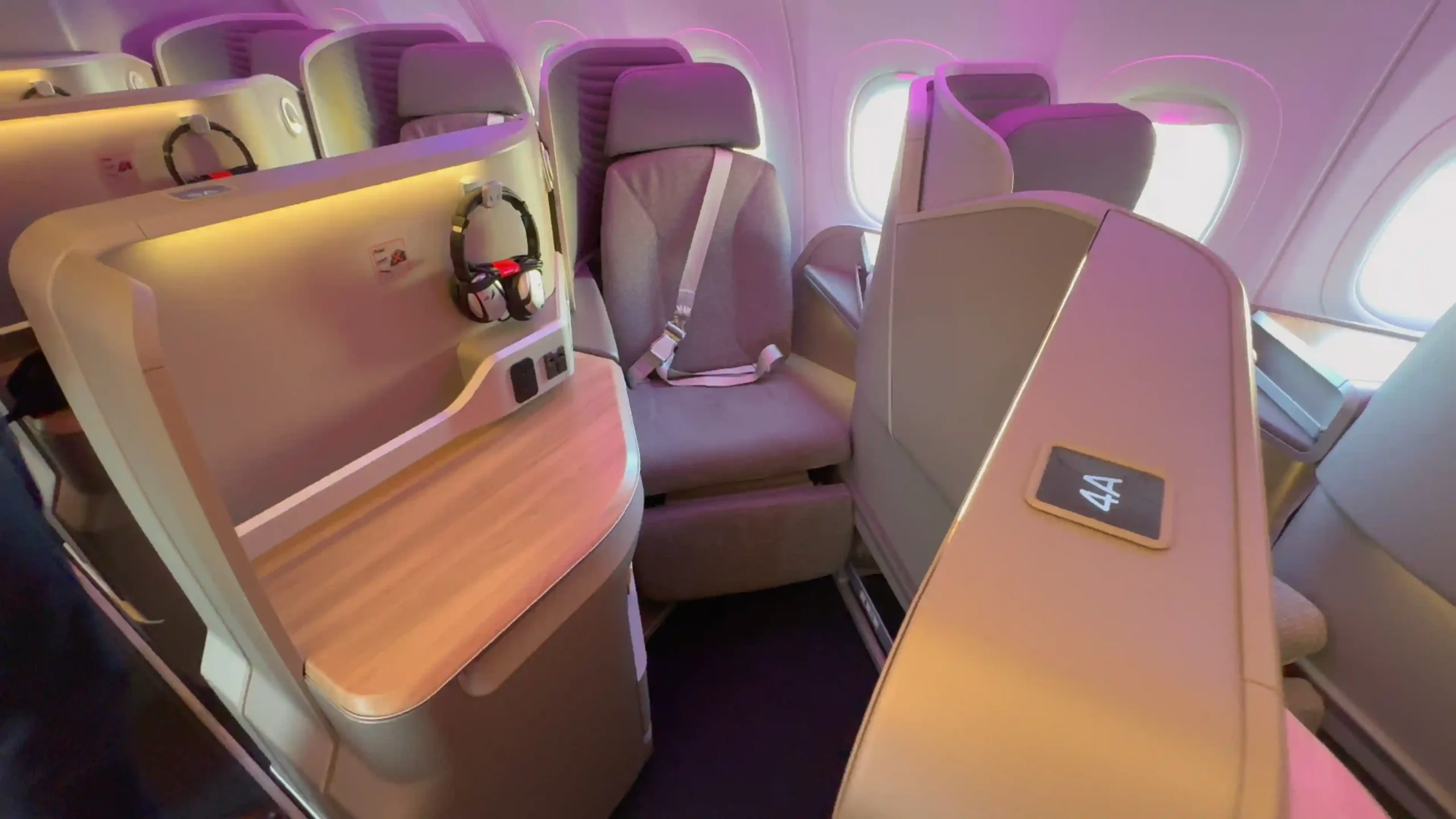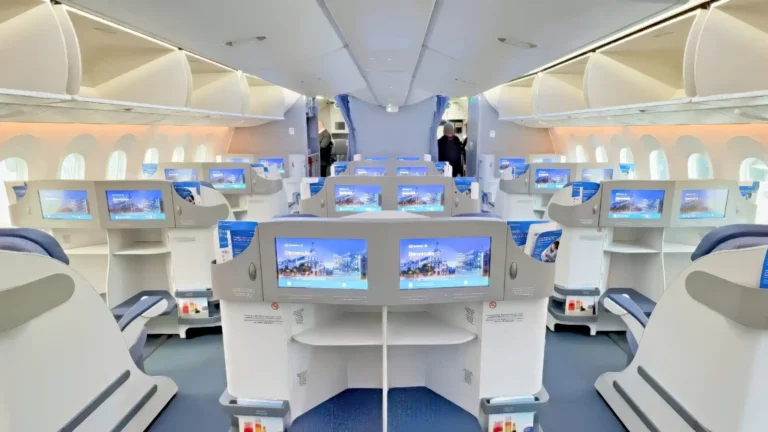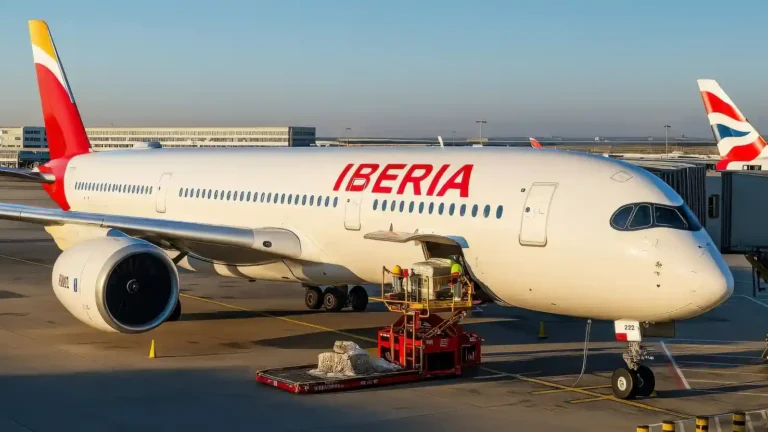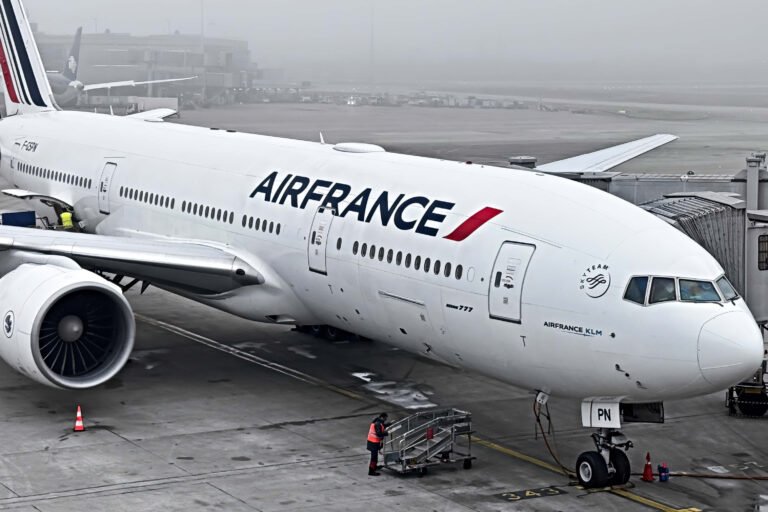Iberia Business Class Review from Stockholm to Madrid on the A321XLR
Join me on a special flight aboard Iberia’s brand-new Airbus A321XLR, the world’s first of its kind. This aircraft is set to redefine long-haul travel, offering up to 10–11 hours of nonstop flying on a single-aisle jet — something we’ve never seen before.
For now, Iberia is using the aircraft for shorter European flights to train pilots and crews before launching its first transatlantic route to Boston. I was lucky enough to secure a seat on one of its very first commercial flights, from Stockholm (ARN) to Madrid (MAD).
In this review, I’ll walk you through the entire experience:
- Check-in at Stockholm Arlanda
- Boarding Iberia’s first A321XLR (EC-OIL)
- Business Class cabin and my seat 5A
- In-flight dining and service
- Flight experience en route to Madrid
- Final verdict: does the A321XLR really feel like the future of long-haul flying?
Flight details:
- Flight number: IB824
- Date: November 7, 2024
- Route: Stockholm (ARN) – Madrid (MAD)
- Departure: 14:40
- Arrival: 18:45
- Aircraft: Airbus A321XLR (EC-OIL, world’s first)
- Class: Business Class
- Seat: 5A
- Duration: ~4 hours
- Frequent flyer program: Iberia Plus / oneworld
From the moment of boarding to the landing in Madrid, this was a rare opportunity to preview the future of transatlantic narrowbody flights.
Stockholm Airport (ARN)
I arrived in Stockholm on an SAS flight from Oslo, carrying only hand luggage, so there was no need for check-in. What makes Iberia departures from Arlanda a bit inconvenient is that they operate out of Terminal 2, not the main Terminal 5. This means a bus transfer between terminals, which can easily take 20–30 minutes, so it’s important to plan ahead if you’re connecting.
Terminal 2 itself is small and rather tired-looking, a stark contrast to more modern hubs like Madrid-Barajas. The design feels dated, with limited facilities and almost no shopping or dining options compared to larger terminals. While it’s easy to navigate, it doesn’t offer much in terms of comfort or atmosphere.
For premium passengers, the real escape from this underwhelming terminal comes in the form of the lounge, which I visited before boarding.
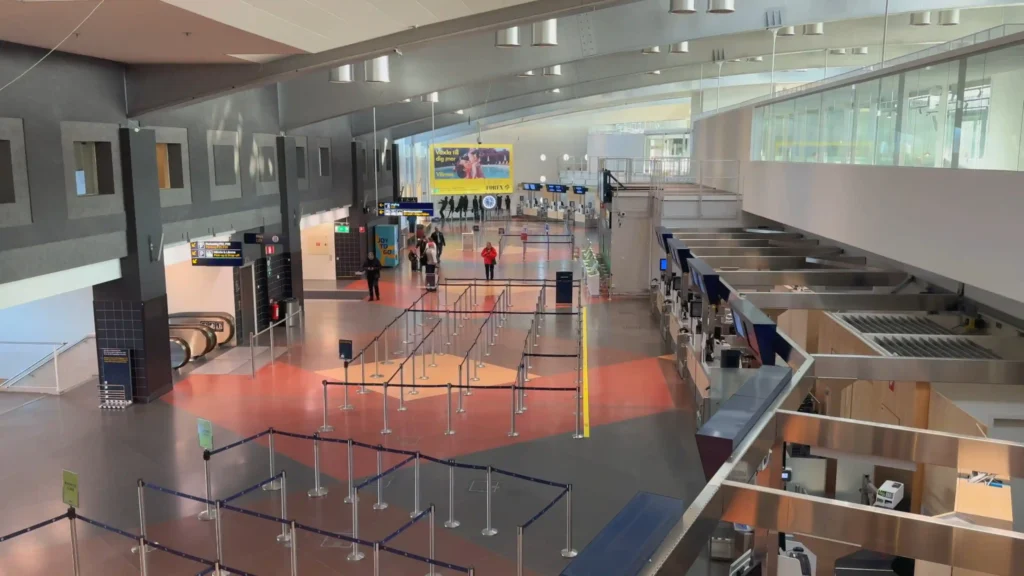
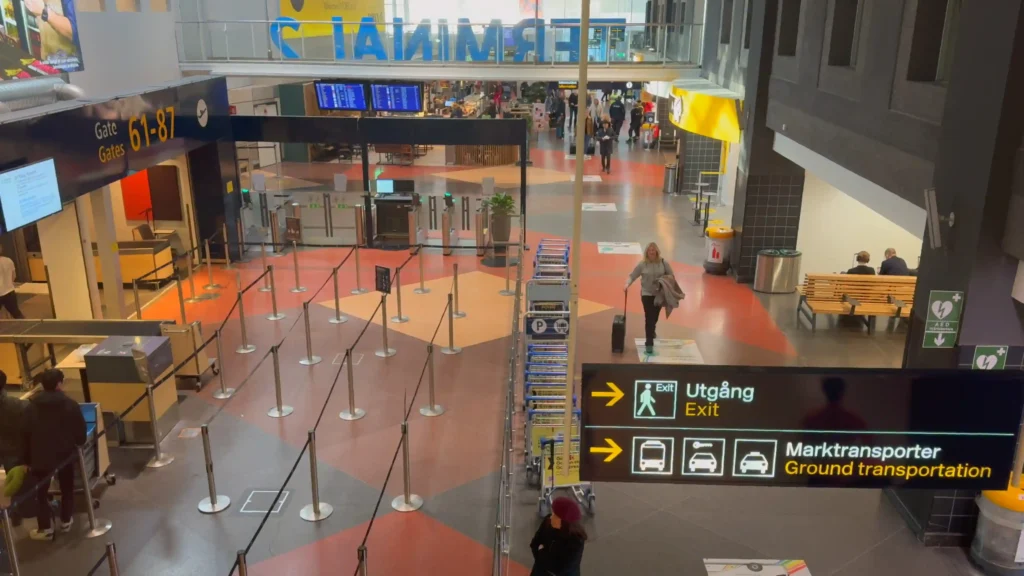
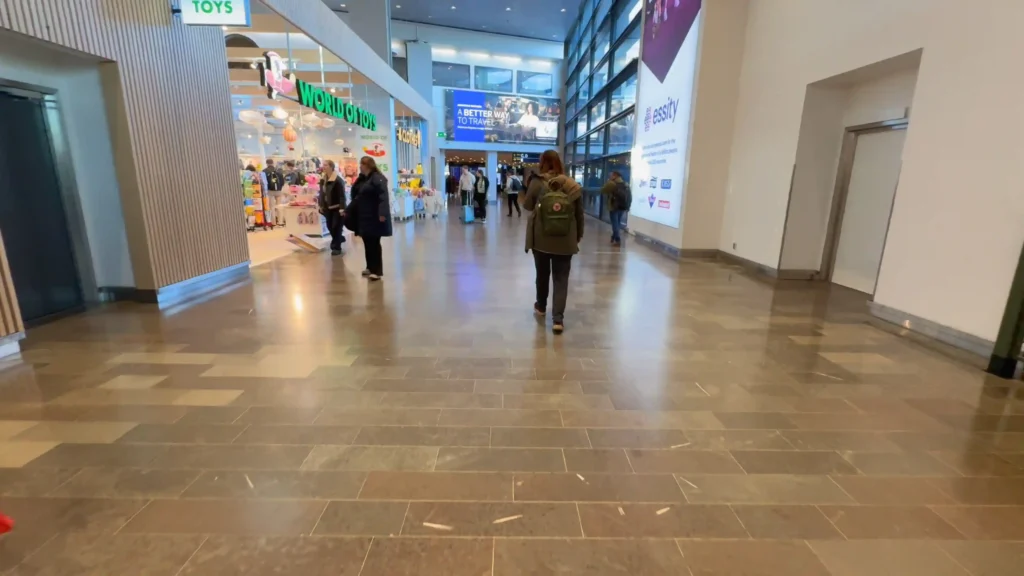




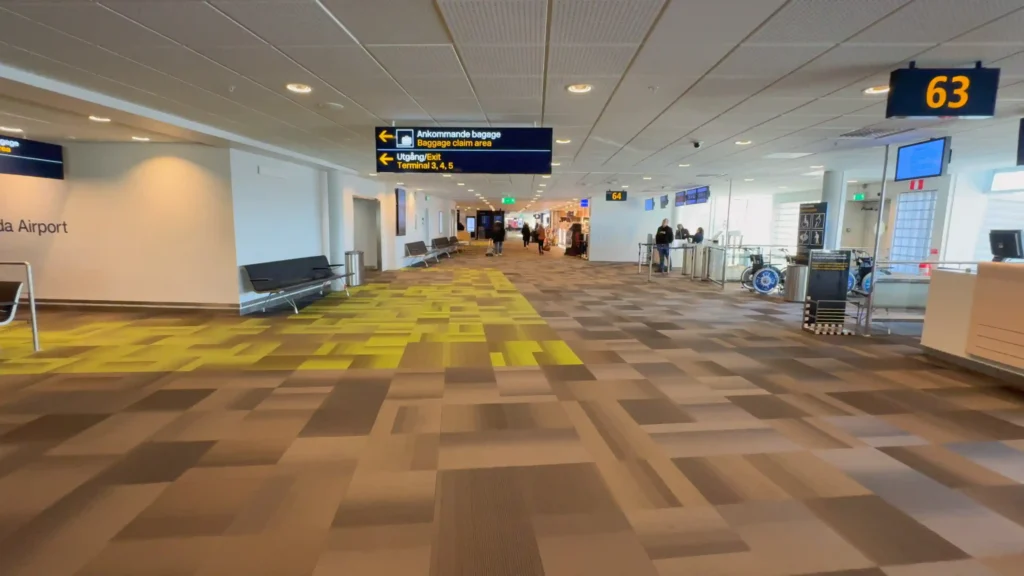
Pearl Lounge Arlanda
As a Business Class passenger on Iberia, I had access to the Pearl Lounge in Terminal 2. This is the main contract lounge used by several international airlines at Arlanda, and while it provides a quiet space to wait before boarding, it’s far from a premium experience.
The lounge is small and basic, with limited seating areas that can feel crowded during peak times. Food options were modest, consisting mostly of cold snacks, sandwiches, and packaged items, with a few drinks and a self-service coffee machine. It’s more of a functional waiting area than a place to enjoy a proper meal or relax in style.
The interior design is also dated, with no real views of the apron or runways, which is always a disappointment for aviation enthusiasts. Wi-Fi was stable and fine for working, but the atmosphere lacked the premium feel you’d expect when flying Business Class with a major airline like Iberia.
All in all, the Pearl Lounge is better than waiting at the crowded gates of Terminal 2, but it’s certainly not a highlight of the journey.
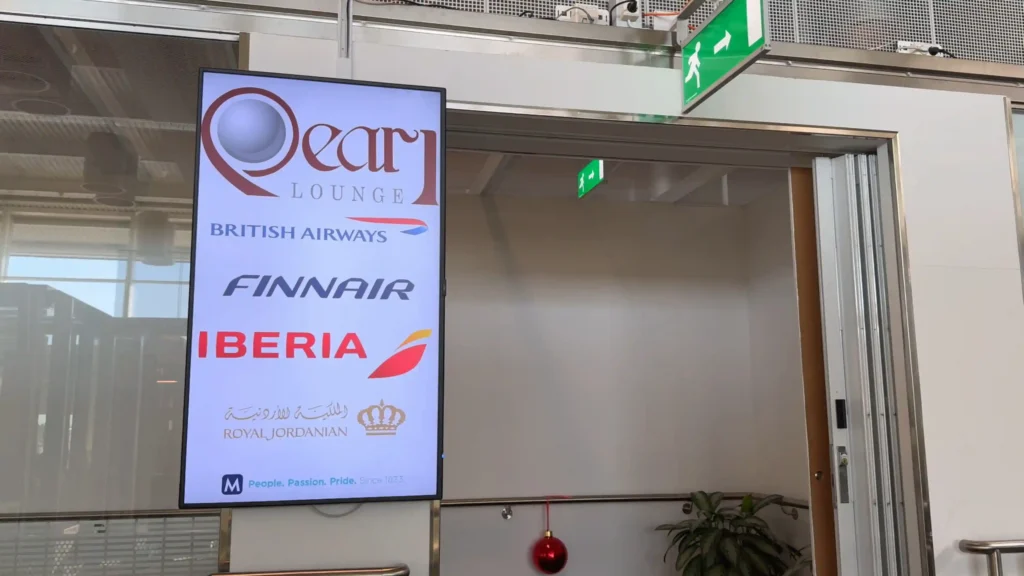
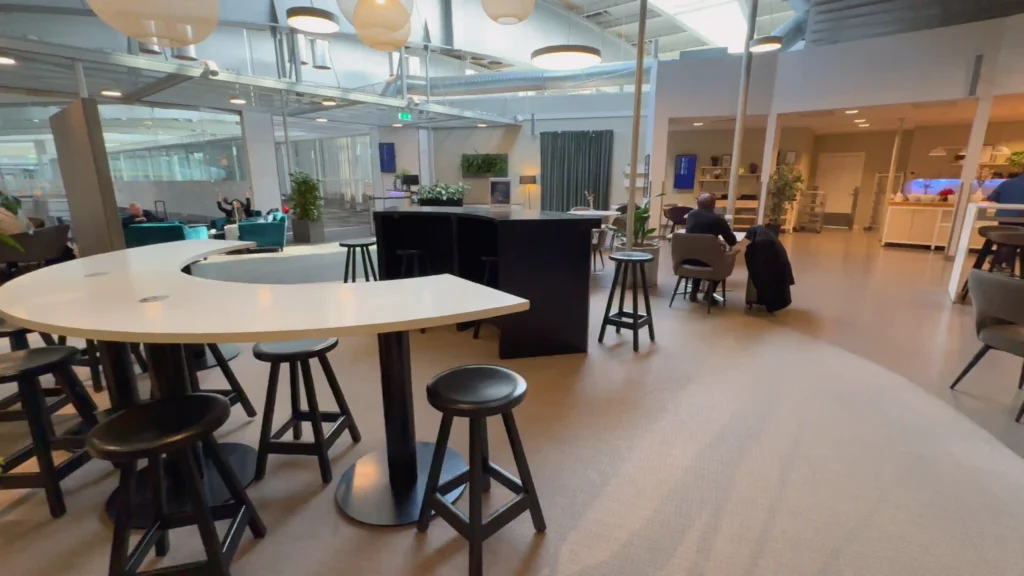
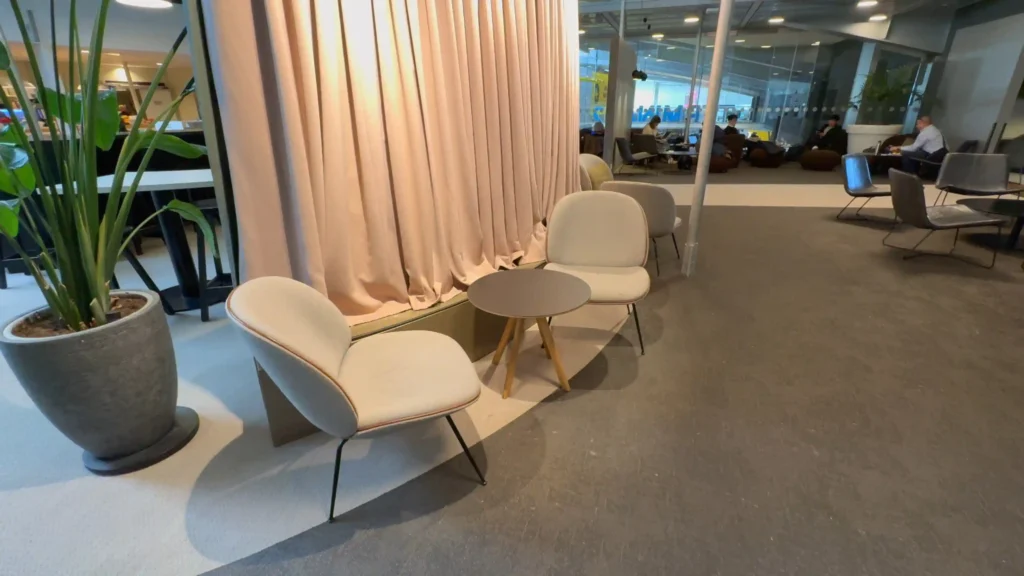



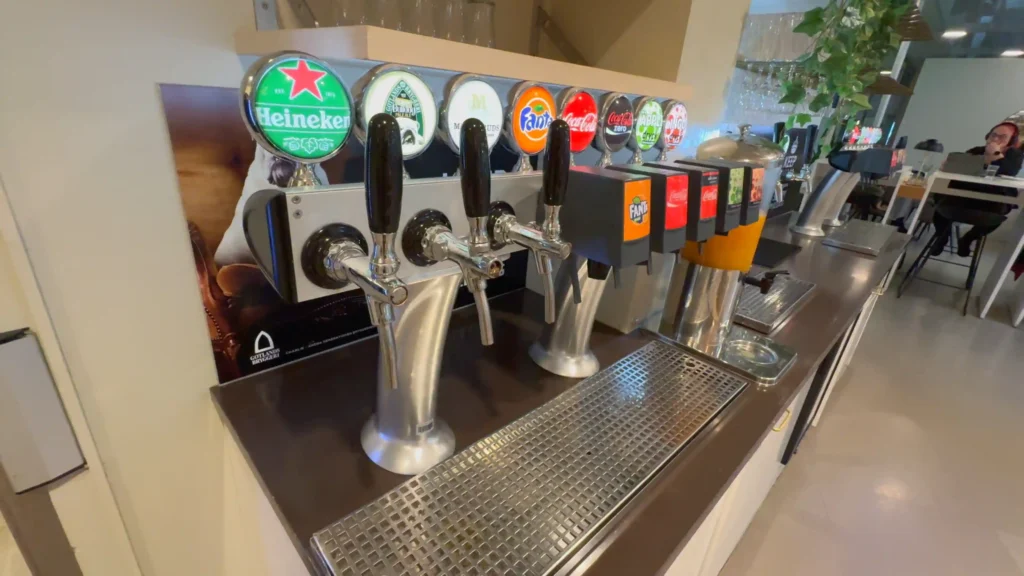
Boarding Iberia’s A321XLR
Boarding started on time, with a priority lane for Business Class and elite status passengers. The excitement among passengers was noticeable — after all, this was not just another Iberia narrowbody flight, but one operated by the world’s very first Airbus A321XLR.
Stepping onboard, I was immediately struck by how modern and premium the cabin felt. Iberia has fitted the Business Class cabin in a 1–1 configuration, giving every passenger direct aisle access and full privacy — something you’d normally expect only on a widebody long-haul aircraft. For a narrowbody jet, it’s absolutely mind-blowing.
The cabin design was sleek and minimalist, in line with Iberia’s new branding: bright whites, subtle greys, and red accents that felt fresh and sophisticated. Each seat resembled an individual suite, with high walls offering plenty of privacy — a dramatic difference compared to Iberia’s older A320-family aircraft in Europe.
It was clear from the moment I sat down that the A321XLR isn’t just another regional plane — it’s built for long-haul comfort. Even on this short 4-hour hop to Madrid, you could feel that this aircraft is the future of transatlantic narrowbody travel.
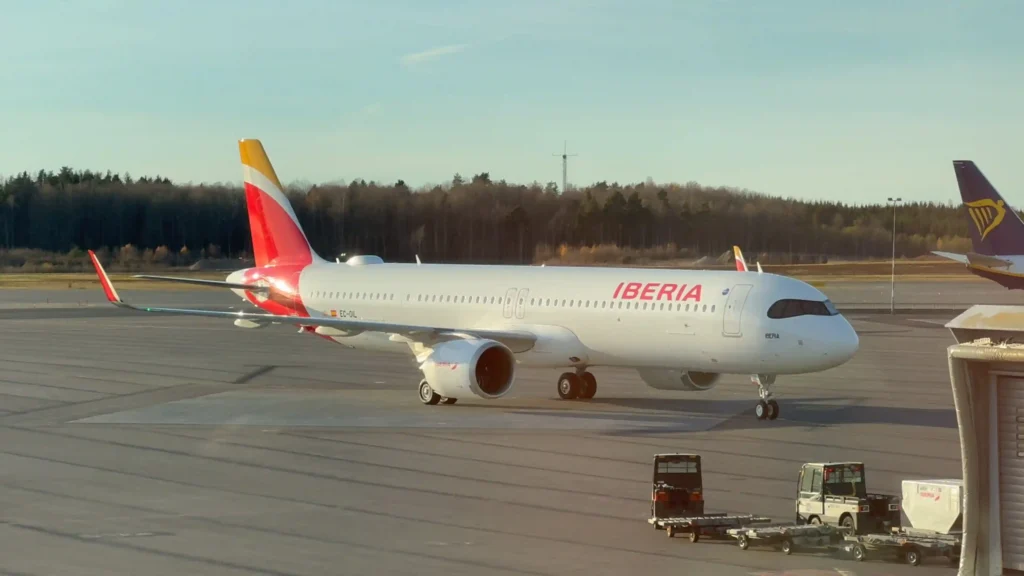
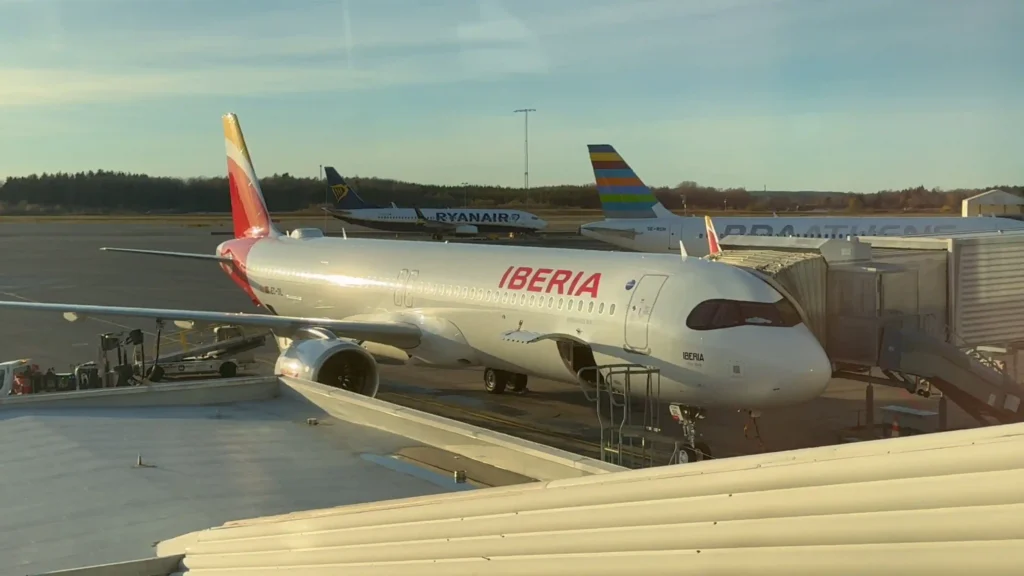
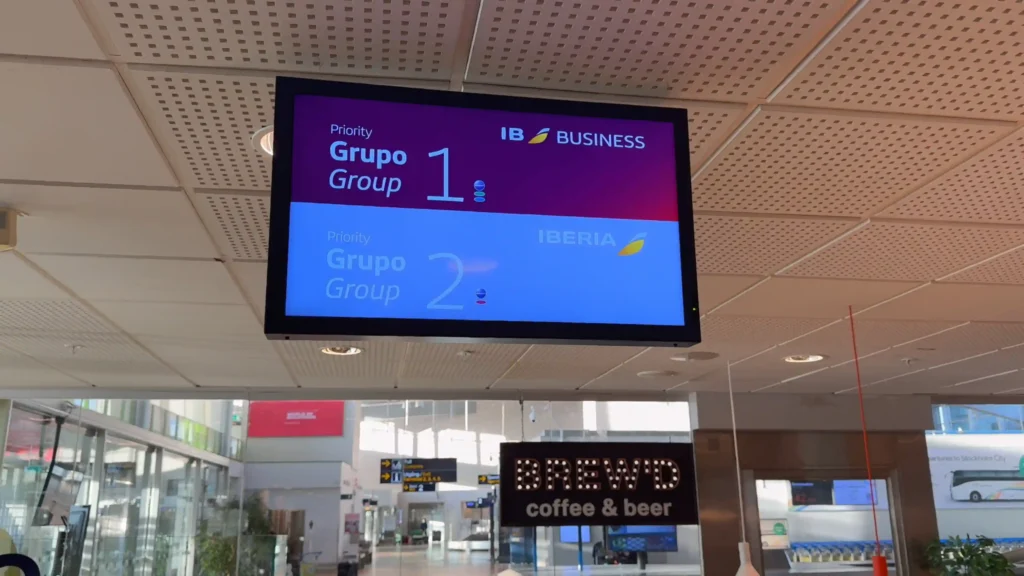
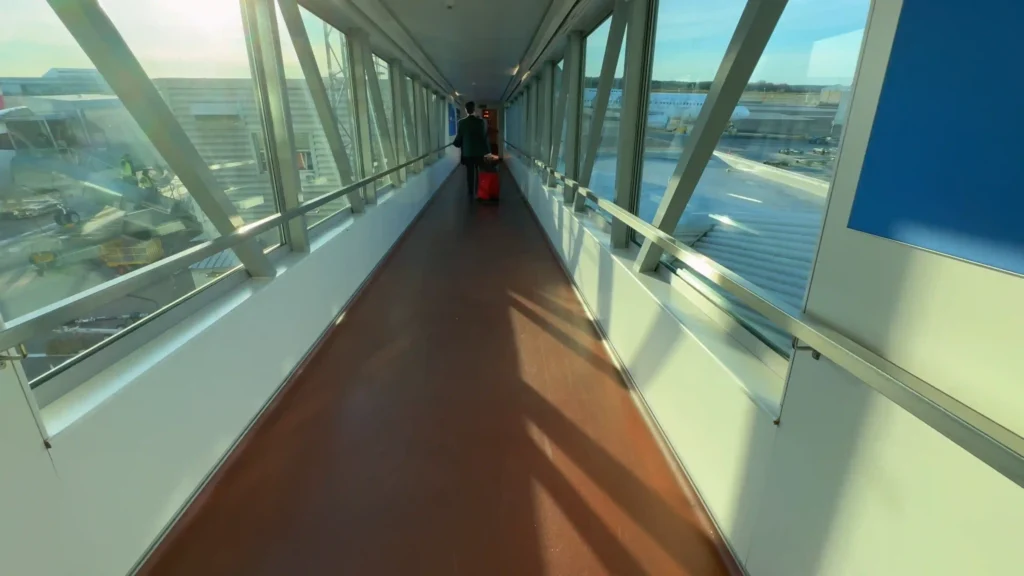

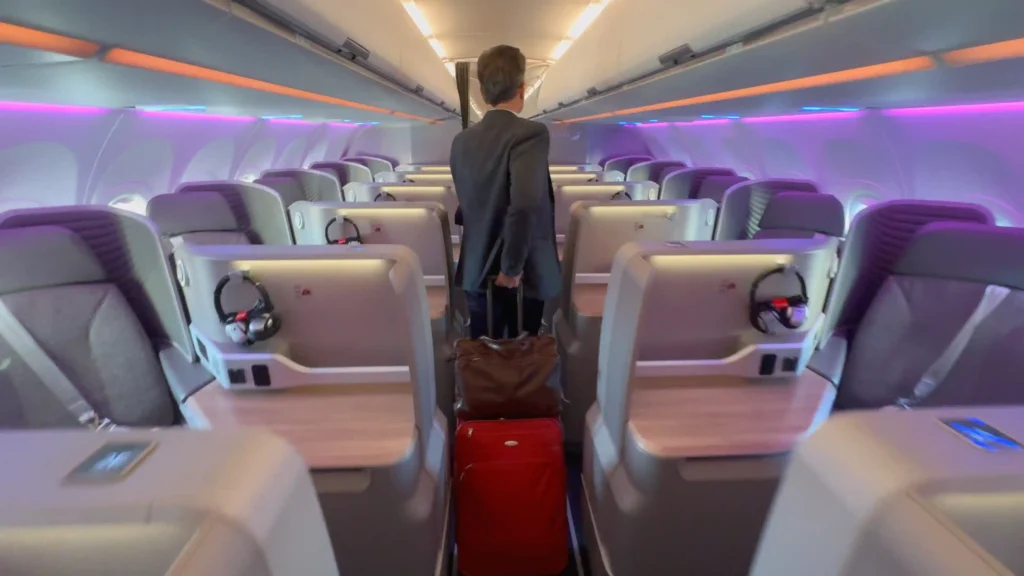




Iberia A321XLR Business Class Seat & Entertainment
My seat for this special flight was 5A, located midway through the single-aisle Business Class cabin. The 1–1 configuration instantly sets the A321XLR apart from any other narrowbody — it felt more like a mini-suite than a standard seat.
The seat converted into a fully flat bed, with plenty of length and width for comfortable sleeping on long-haul flights. Each seat had direct aisle access, a large tray table, and ample storage for personal items. Iberia also included a water bottle holder, multiple USB ports, and universal power outlets, making it easy to stay charged and connected.
The privacy was outstanding — high dividers between seats meant you really felt in your own space, something even many widebody Business Class cabins don’t achieve.
In front of me was a large high-definition screen, loaded with Iberia’s in-flight entertainment system. The selection included an impressive mix of movies, TV shows, and music, with content available in both Spanish and English. The touchscreen was smooth and responsive, and you could also control it with a remote.
Noise-cancelling headphones were provided, though as always, bringing your own is recommended for the best sound quality. Even without Wi-Fi (which Iberia is expected to eventually add on long-haul routes), the seat and entertainment setup left me thinking: this aircraft is absolutely ready for 8–10 hour flights.
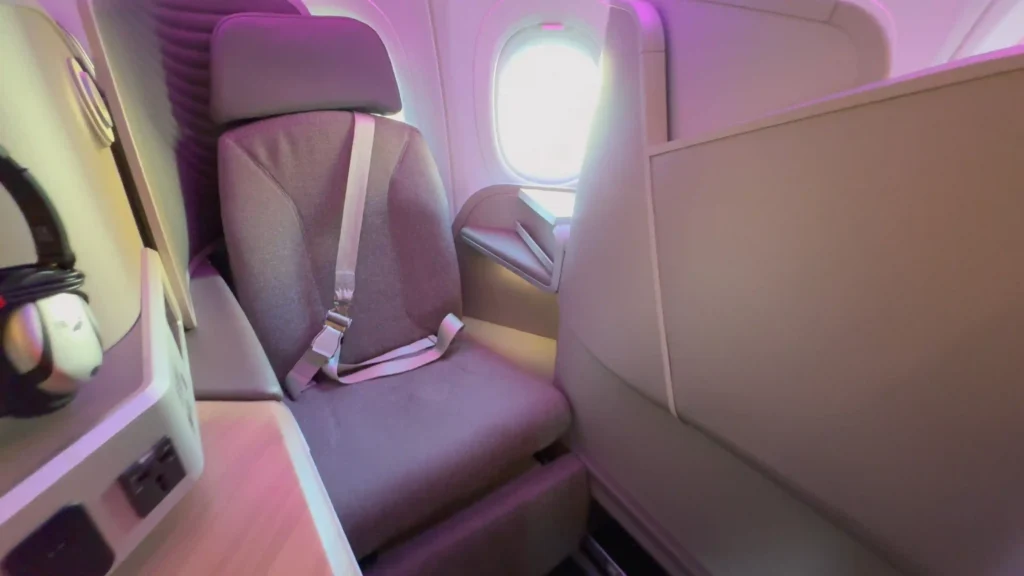
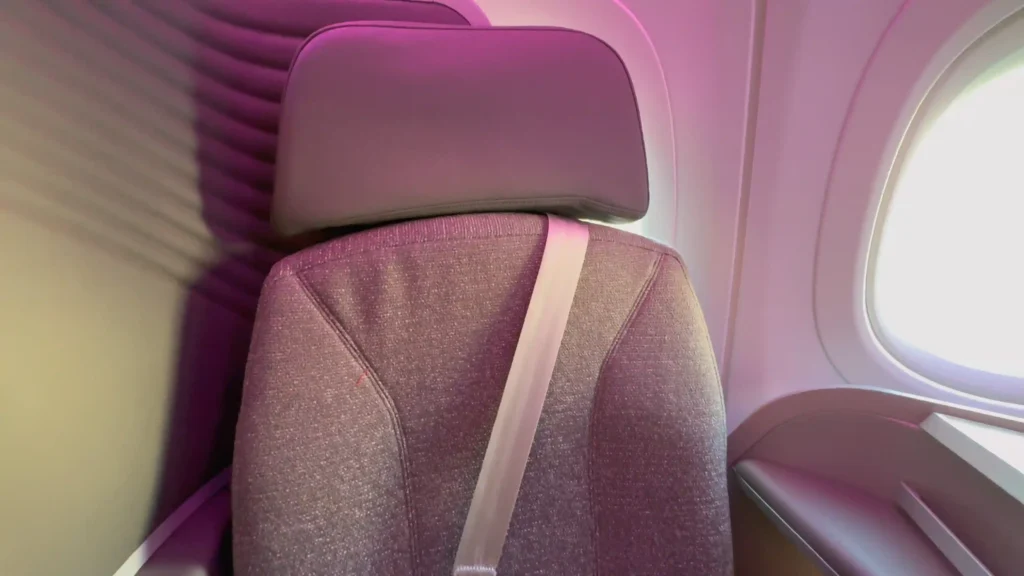
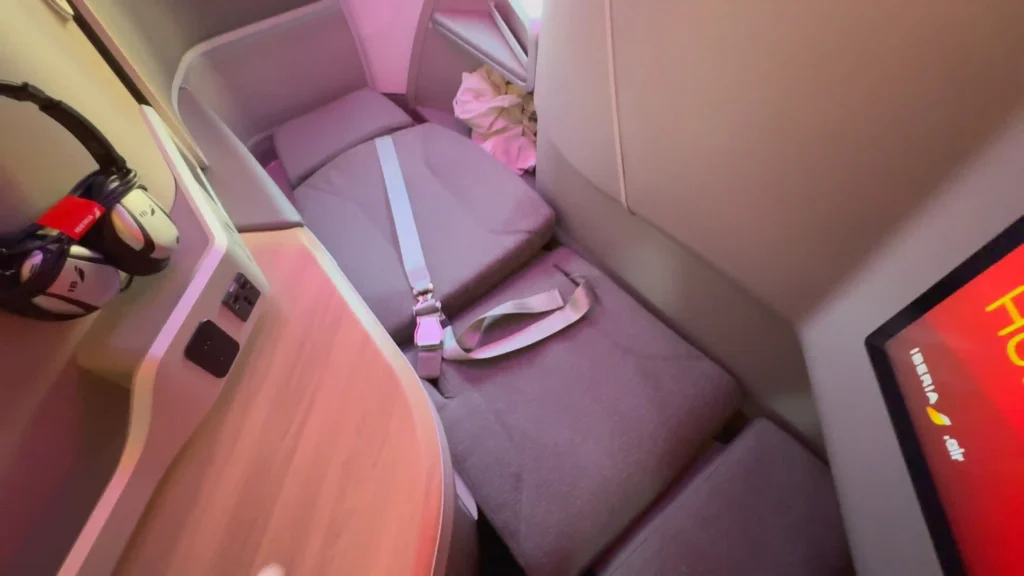
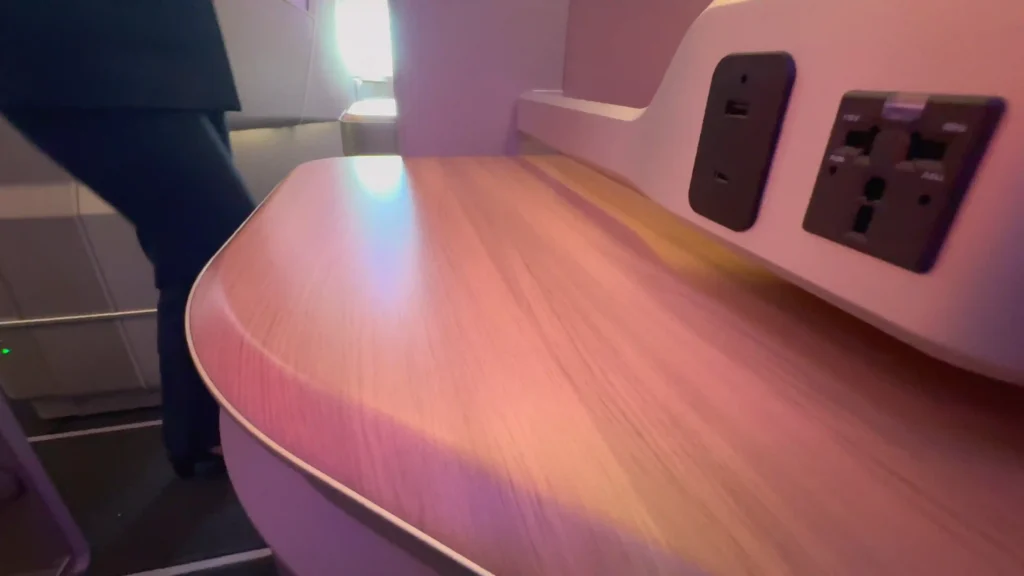
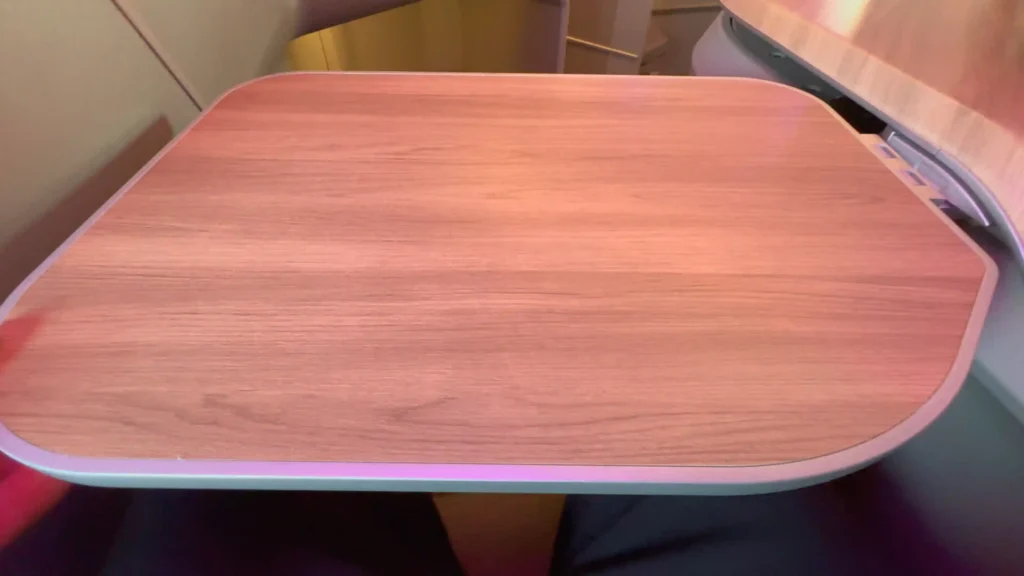
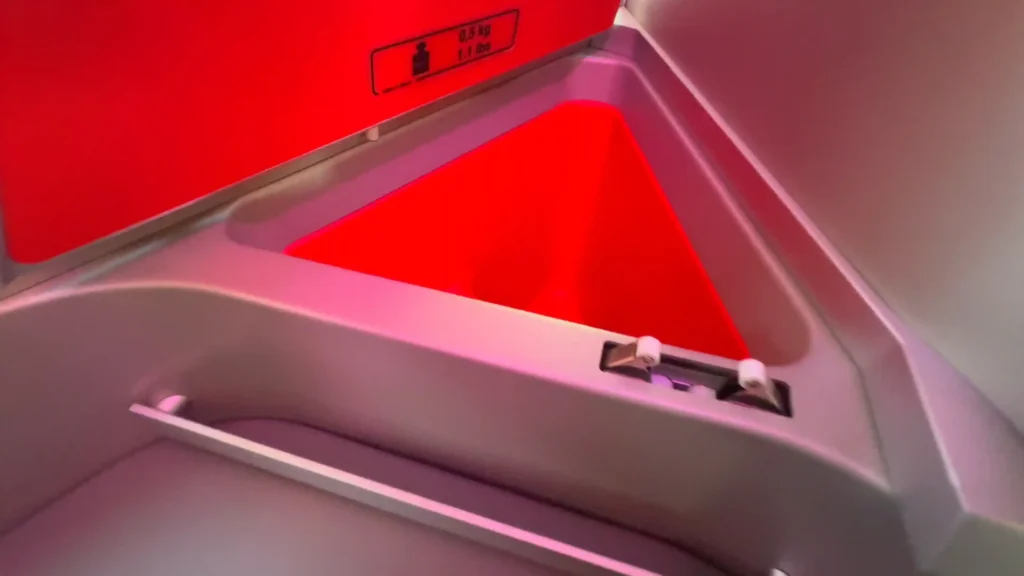



Food onboard
Shortly after takeoff, the crew began the Business Class meal service. One thing Iberia consistently does well is catering, and this flight was no exception — it was truly a highlight of the journey.
Menus were distributed shortly after boarding, with two main options available. I chose the pasta dish, which was served with a fresh seasonal salad, artisan bread, and a light dessert. The presentation was elegant, and the flavors were excellent — it felt like a proper restaurant-quality meal, not something you’d expect on a short intra-European flight.
The drink selection was also strong, with Spanish wines, cava, and spirits available alongside soft drinks and coffee. I paired my pasta with a glass of Spanish white wine, which complemented the dish perfectly.
What stood out most was the attentive service. The crew checked in regularly even after the main service was complete, offering extra drinks and snacks. Their warmth and professionalism added to the premium feel of this very special flight.
All in all, Iberia’s catering remains one of its biggest strengths — and having such quality food on a narrowbody aircraft like the A321XLR only makes the experience more impressive.


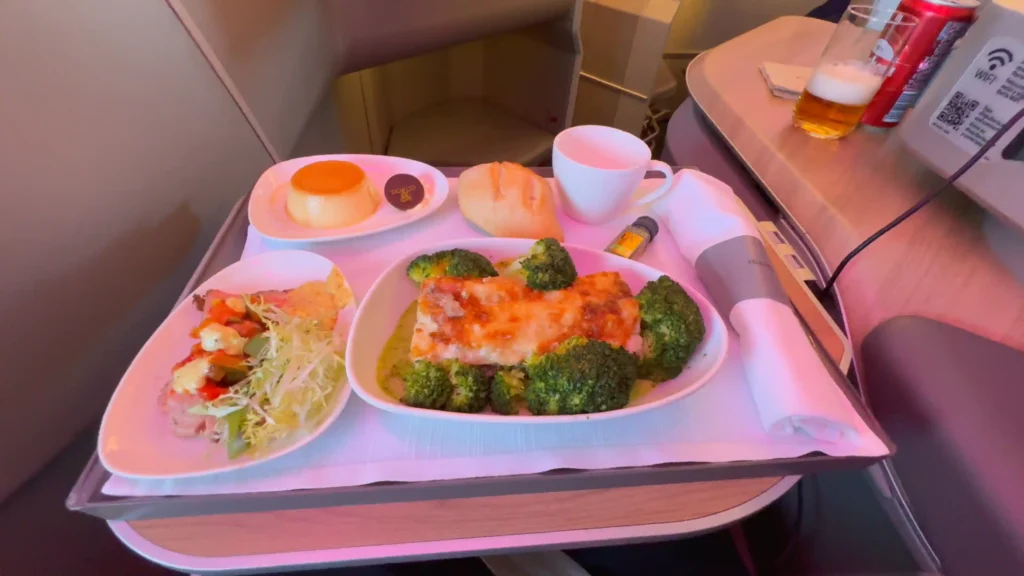
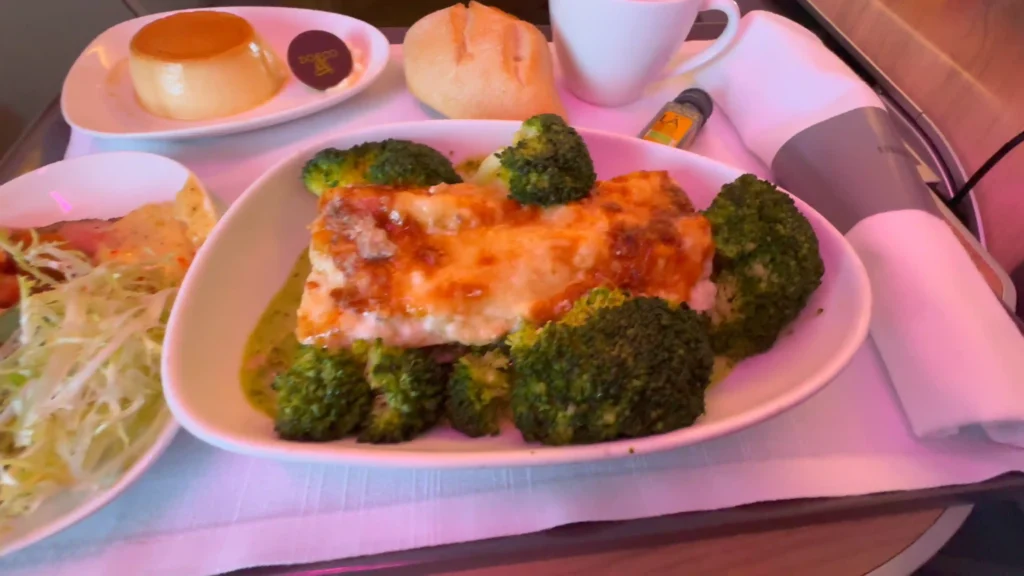
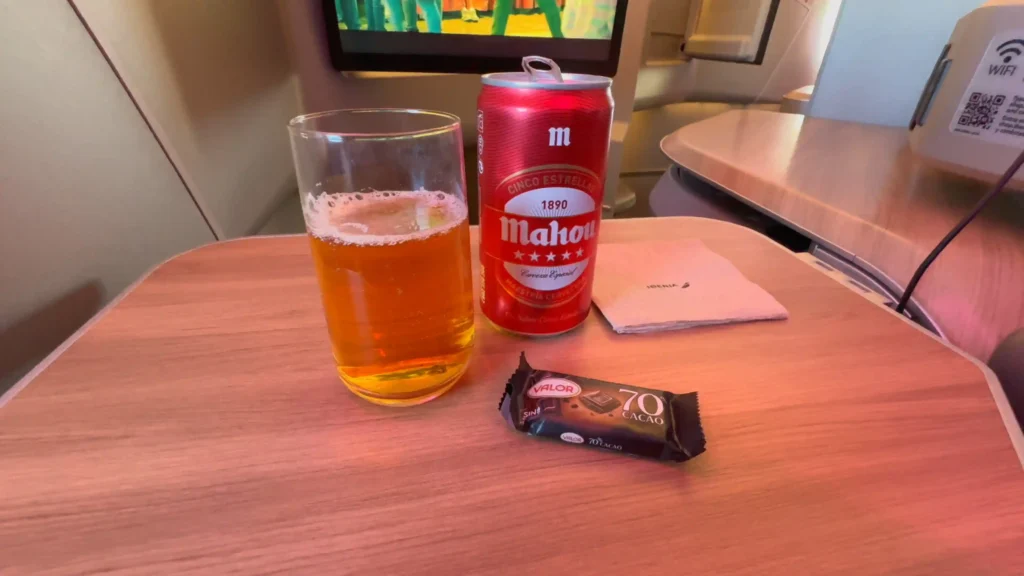
Flying from Stockholm to Madrid
Despite a fairly long taxi to the runway at Arlanda, we managed to take off right on time. One of the most striking things about the Airbus A321XLR is just how quiet the engines are. The reduced noise levels made the cabin noticeably calmer, adding to the sense of space and comfort — a real improvement compared to older narrowbody aircraft.
Our route took us east out of Stockholm, before turning south across Denmark, the Netherlands, and France on the way to Spain. The flight was smooth and uneventful, which gave me time to fully appreciate the modern cabin environment and the extra comfort this aircraft offers.
As we approached Madrid, the timing couldn’t have been better. We descended toward runway 32R with the city bathed in a spectacular sunset glow. From my window in seat 5A, the views of Madrid were breathtaking — a perfect finale to a flight that already felt special in so many ways.
Landing was smooth, and within minutes we were taxiing to Iberia’s home base at Terminal 4, ready for easy onward connections across Spain, Europe, and beyond.
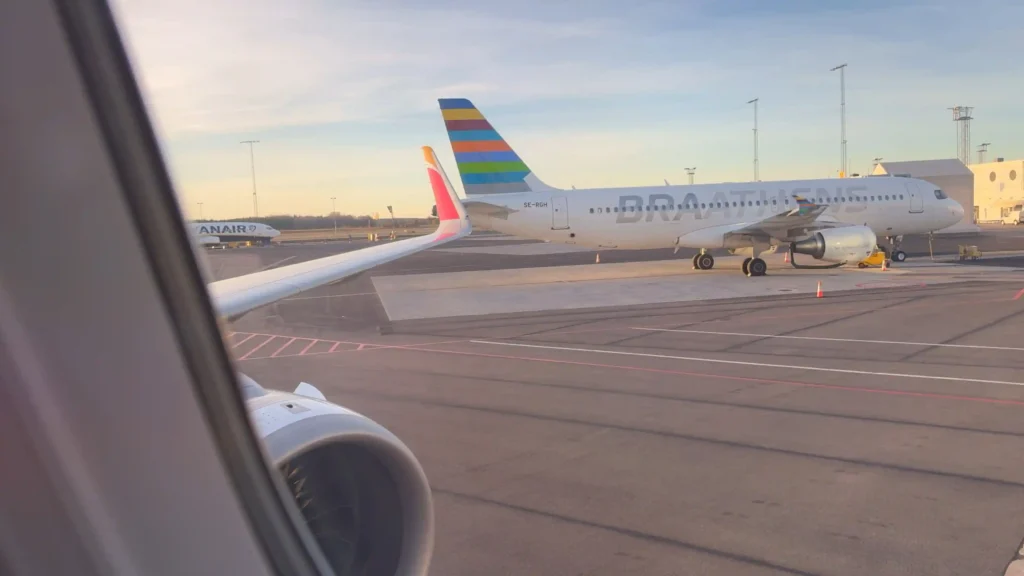
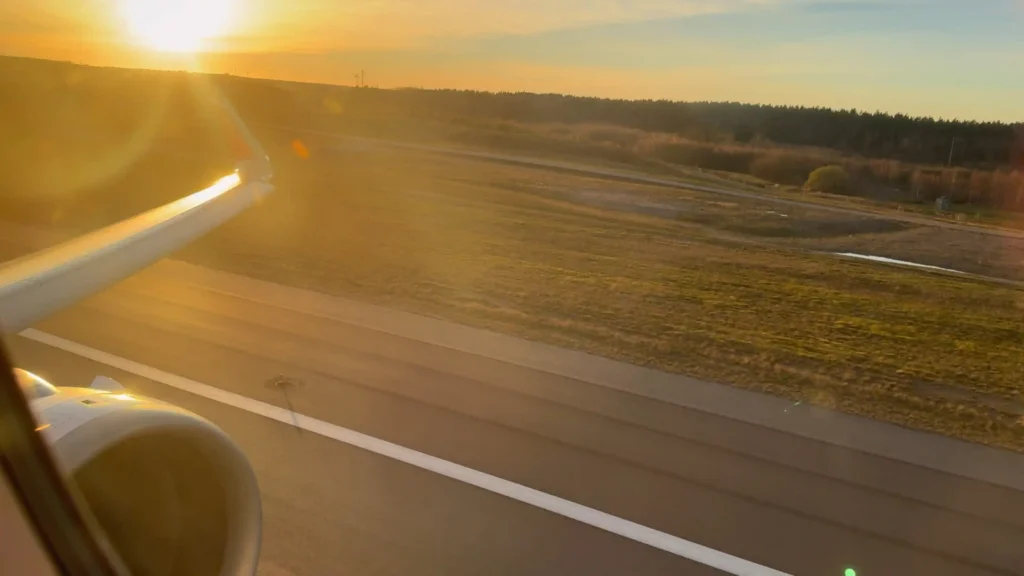


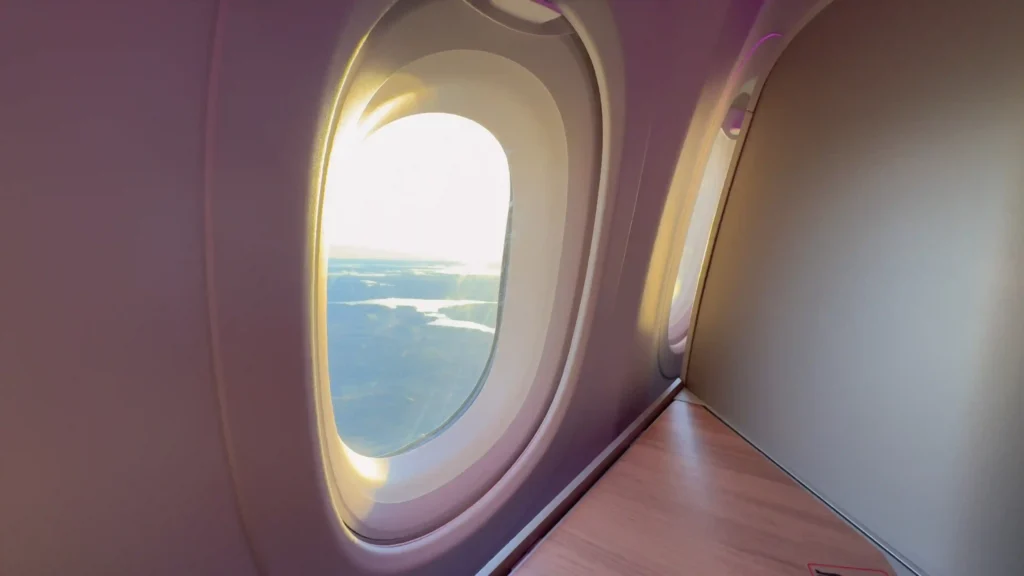


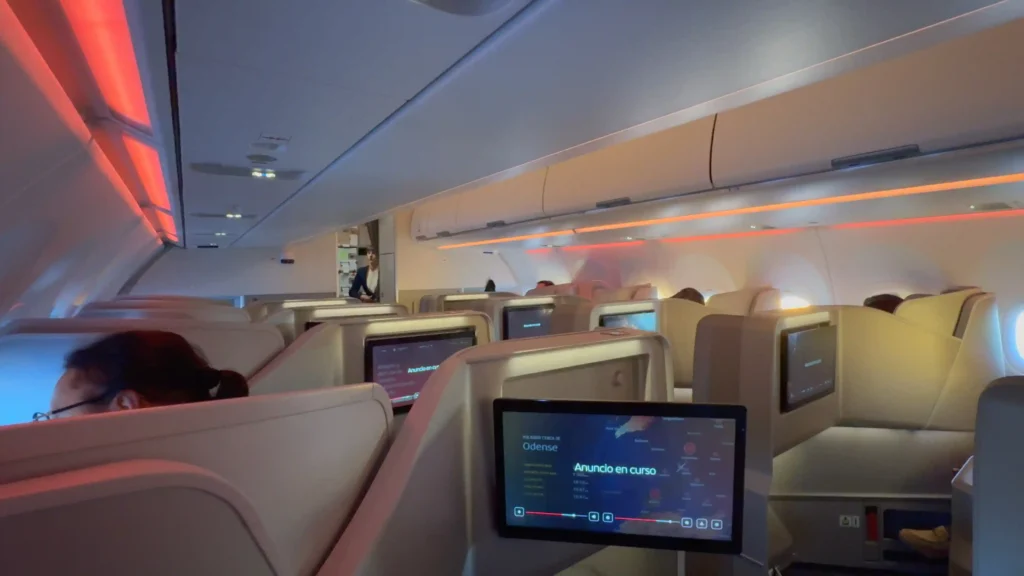



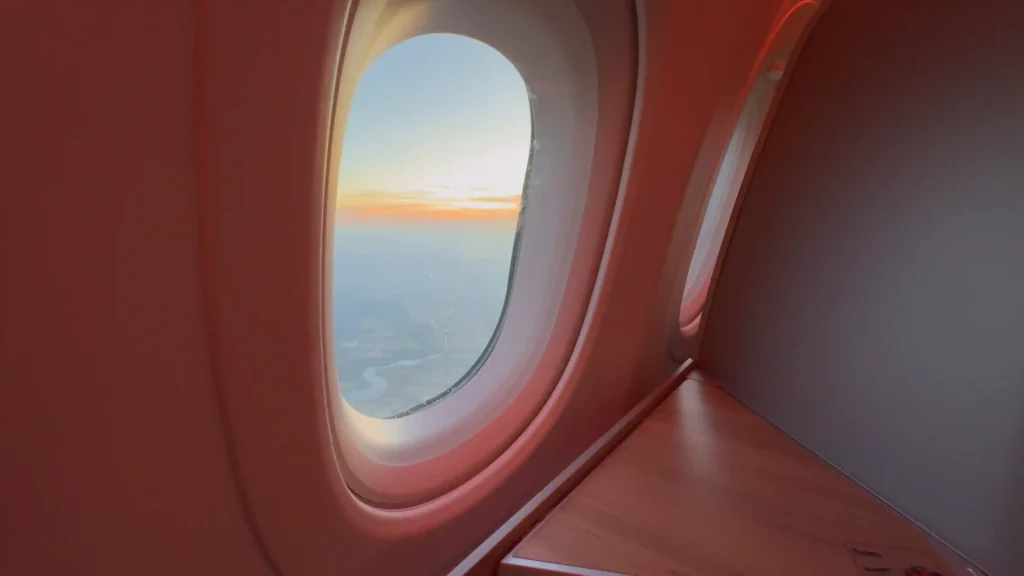








Final Verdict – Iberia A321XLR Business Class
Flying on the world’s first Airbus A321XLR with Iberia was a truly unique experience. From the sleek 1–1 Business Class cabin to the quiet engines, attentive service, and excellent catering, this flight showed exactly why the A321XLR is being called the future of medium- and long-haul travel.
And honestly — why can’t all short- to medium-haul flights be like this? The privacy, comfort, and space felt light-years ahead of the typical European Business Class product, where you often get nothing more than a blocked middle seat. This was Business Class as it should be.
That said, while the A321XLR is incredible for flights of 4–7 hours, I would still personally prefer a widebody aircraft for true long-haul journeys. The sense of space, multiple aisles, and larger galleys on widebodies make them more comfortable overall when flying 10+ hours.
Still, for what it is, Iberia’s A321XLR Business Class sets a new benchmark in European aviation — and it’s a taste of the future we’ll see more of as these aircraft begin transatlantic operations. If you get the chance to fly one, especially in its early days, don’t miss it.

